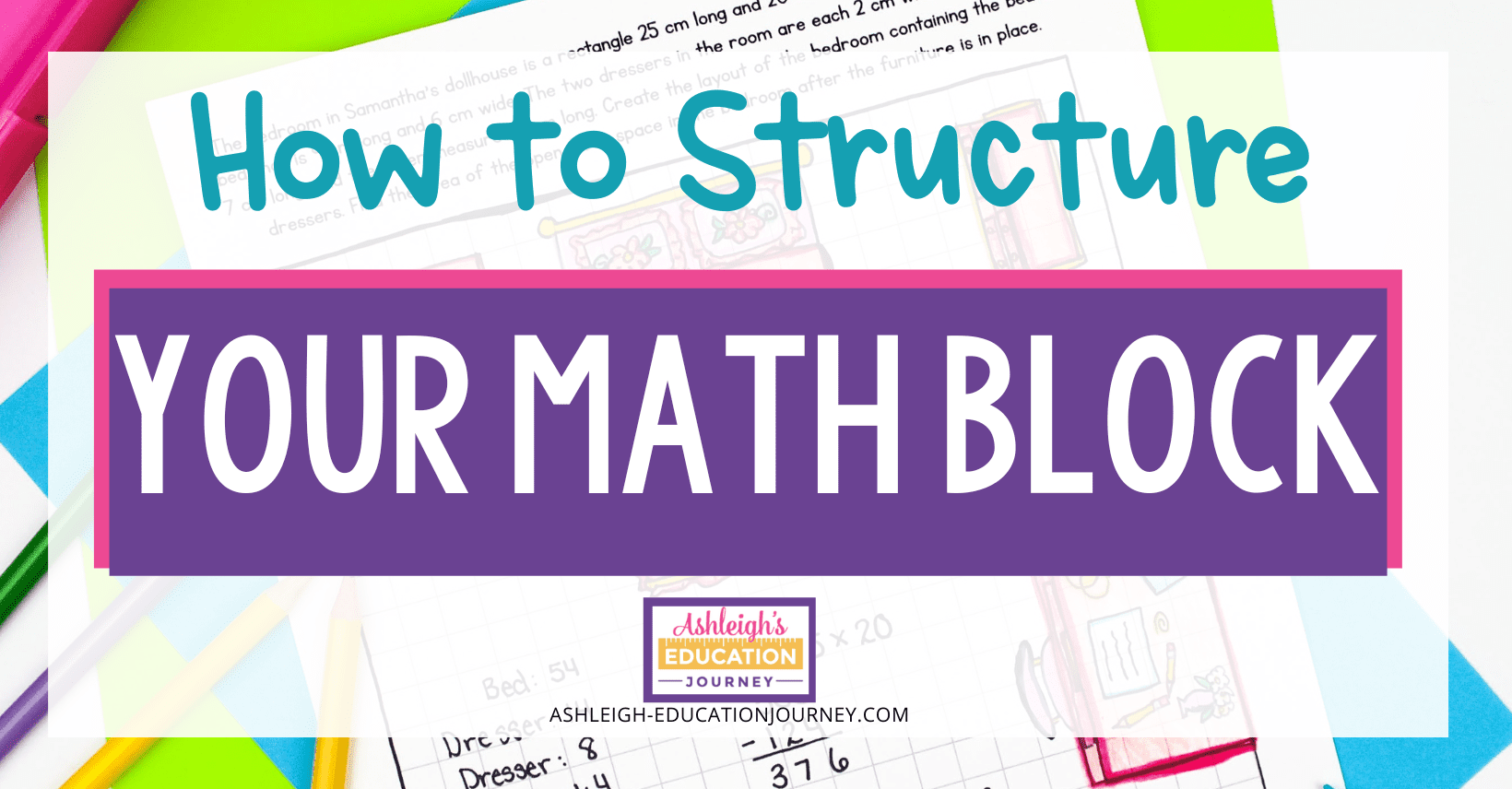
There are many, many different approaches to teaching math and structuring an upper elementary math block. Over the years I’ve tried more strategies than I can count, and I’ve found that there is no one right way to teach math. Different concepts and activities lend themselves to different structures. The key is to be flexible, yet consistent.
Warm-Up
I begin our math block with a math warm-up. The warm-ups range from a large variety of activities. Sometimes I incorporate skills practice through a Number of the Day worksheet. Other days I implement number talks. I also love to focus on number sense during warm-up activities. The warm-up rarely takes up more than 5 minutes of our math block, and it’s a great way to wake students up and to focus their minds on math.
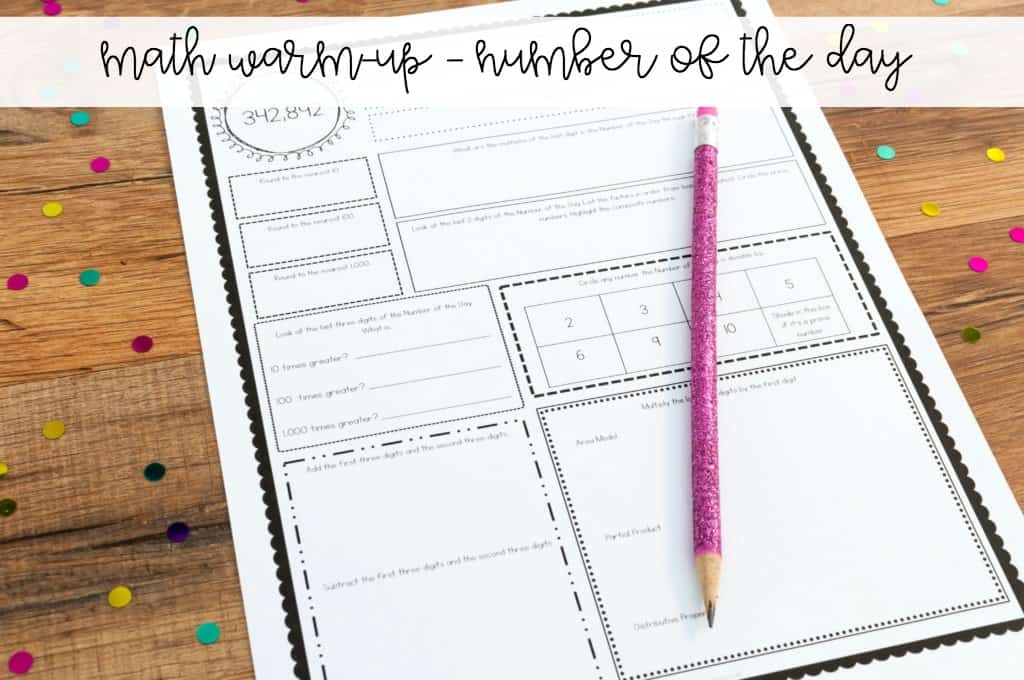
Mini-Lesson
Whole group mini-lessons are usually about 10 minutes long. During this time, I often review previous skills or introduce new skills and vocabulary. Some days I’ll read a book that relates to the concept we’re studying, or we might play a quick whole group game such as ‘I Have Who Has’. I love using Math Reference Notes during my mini lessons as a guided note taking tool. The left side of the page has student friendly examples, and then I use the right side of the page for guided practice.
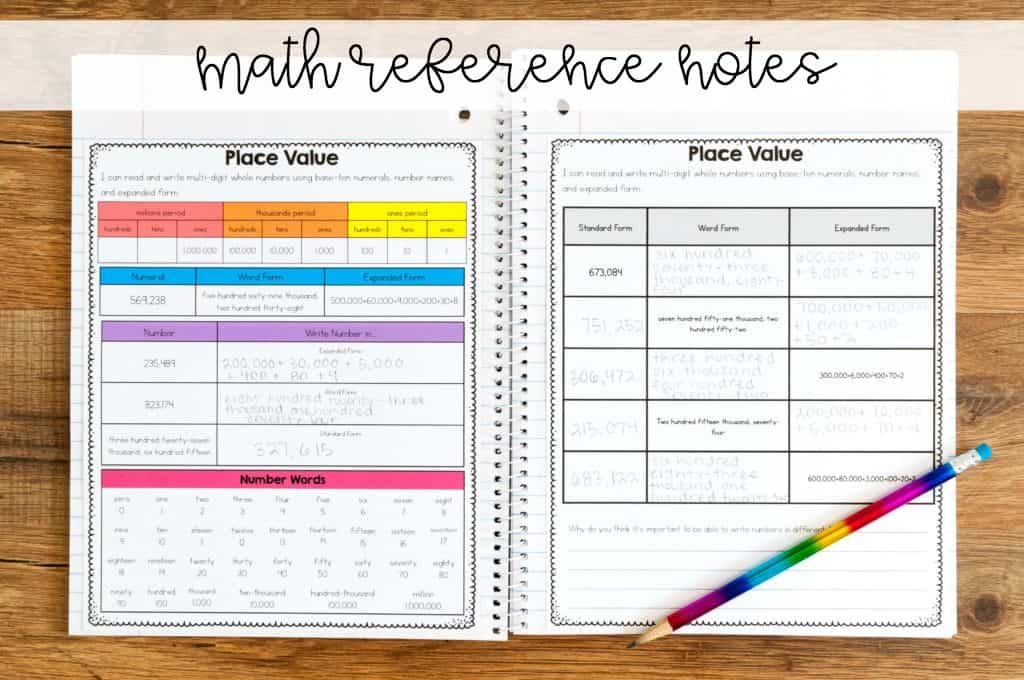
During the mini lesson I also set the stage for the task. It’s important to make sure students understand the task’s directions and your expectations for the final product. On more complex tasks, you may even want to model with a simplified version of the task.
Work Time
This is when students do the math through a variety of math activities, and the possibilities are endless. During this time you can meet with students in small group, have students participate in math centers, students can play partner games, or students may complete performance tasks.
A good performance task or problem based learning task requires students to problem solve and apply what they have learned. I like to have all of my students work on the same basic task, but I differentiate the task for my different ability levels. For example in the long division activity below, some students may work with smaller number, or I may differentiate the task by incorporating a little area and perimeter.
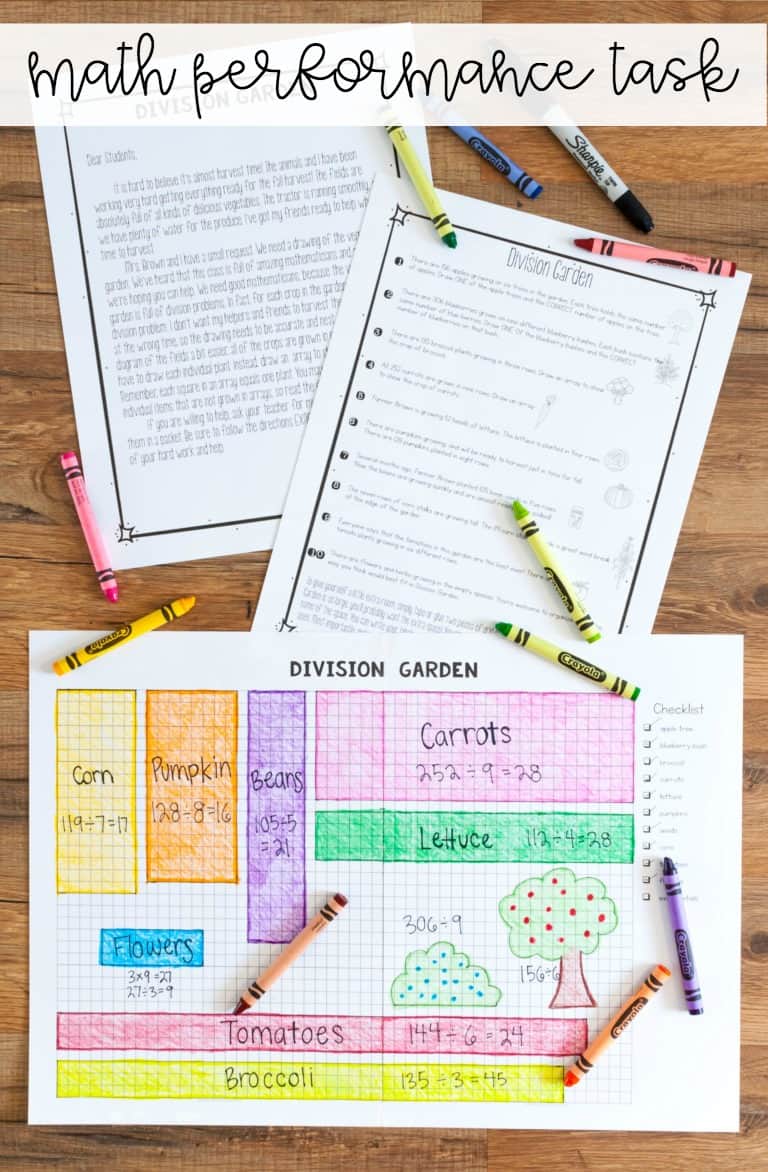
Closing
This is the time for students to share what they learned, struggled with, or would like to learn more about. They should share HOW they completed their task and allow other students to ask questions and make comments. It is important to focus on the process, rather than only if the student got the answer right (which of course is important too). I try to have questions prepared in advance for this time, because the questions asked should promote a deeper thinking and understanding of the concept. It is also important that to clear up any misunderstandings or misconceptions during this time. I love using Exit Tickets during closing as a brief formative assessment. I use the assessments to guide the following day’s mini lesson or small group.
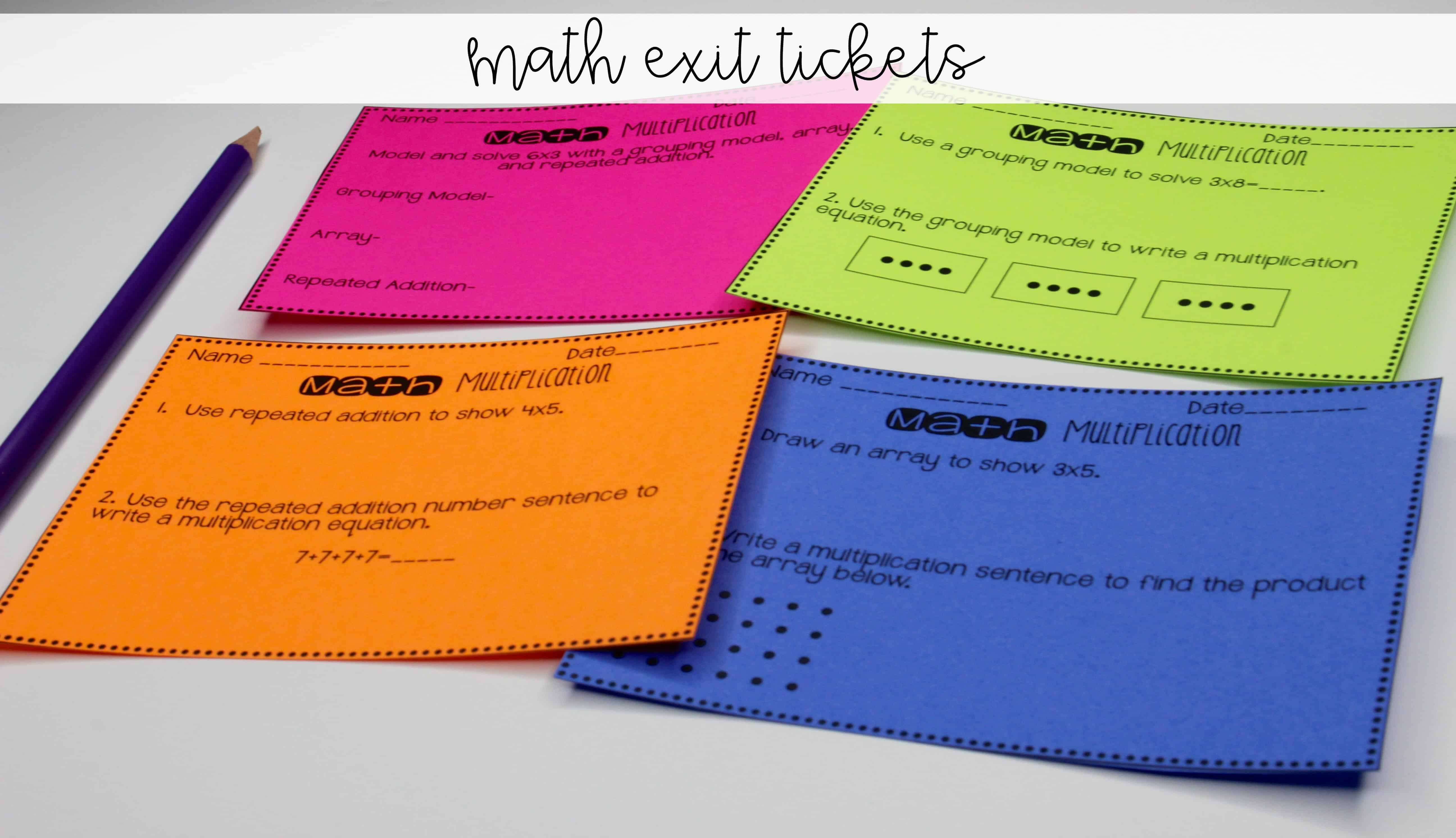

Guided Math Groups
Guided math groups are an important component to guided math. They allow you to monitor student work, help maintain student attention, and provide support for struggling learners. I don’t try to meet with guided math groups five days a week, as it’s just not feasible for me. I like to meet with small groups two to three times a week.
It is best to keep math groups small with four to six students per group, and the number of guided math groups you have will depend on your class size. You can group your students by ability or with mixed ability groups. I most frequently group my students by ability for their guided math groups, and I have heterogenous groups with the students who are not meeting in a guided math group. I always make sure my math groups are fluid and flexible as students’ levels of understanding change.
Since my groups regularly change, I don’t create set or named groups. Almost every year I find that my groups change every week. When determining who should be in what group, I occasionally use my formative assessments and exit slips. I don’t like to use beginning of the year or even unit pretests to form the bulk of my math groups, because I’ve found that with guided math some students quickly make huge gains. Other times, students score well on the pretest don’t excel at the problem solving aspect of the concept.
Anecdotal Notes
My favorite way to determine my math groups is use observations from my mini lesson. This is by far the simplest and most effective tool for anecdotal notes for me. I’ve tried all types of different record keeping forms, but it’s important to never underestimate the power of a sticky note! You can print directly on sticky notes and use those sticky notes for your records. You can keep them together in a data folder. It’s certainly not necessary to print on the sticky note. I typically just write on the sticky note and place the sticky note on my record sheet. If you’re not totally and completely in love with sticky notes like me, you can always write directly on a form. You can download a free copy of the anecdotal note forms here.


Math Centers
On the days I meet with my guided math groups, I incorporate math work stations or math centers. On those days, my students complete two center activities. They go to their first center for 20 minutes and then their second work center for 20 minutes. I have to use a timer to keep myself on track, or otherwise I completely lose track of time.
I have my students grouped into pairs, and I ability group my students’ partners, but I keep into account personalities, behavior, etc. Ability grouping makes it easier for me to differentiate centers for my different levels of learners. I like grouping students into groups of two, because a group of two requires a great deal of accountability from both students.
I have 12 center activities at a time, because I need one center for each group of students. Typically, about 50% of my center activities tend to be on the material we are currently studying in class. The other half of the centers usually review the skills we’ve already learned during the year. My centers consist of task cards, games, and a few store bought activities. I do not include meet with the teacher as a center rotation, because I want to be able to select specific students for my guided math groups.
You can see an example of my centers board below. Once I set up my groups, I use velcro to attach the group’s name to the left of the numbers. Each day, I rotate names down the center board. For example, if on Tuesday a student went to station 1 and station 2, then the next day they would go to station 3 and station 4. Also notice that while one group is a station 1 first and 2 second, another group is at station 2 first and station 1 second. I speak for years of experience when I say that this is SO EASY to manage!
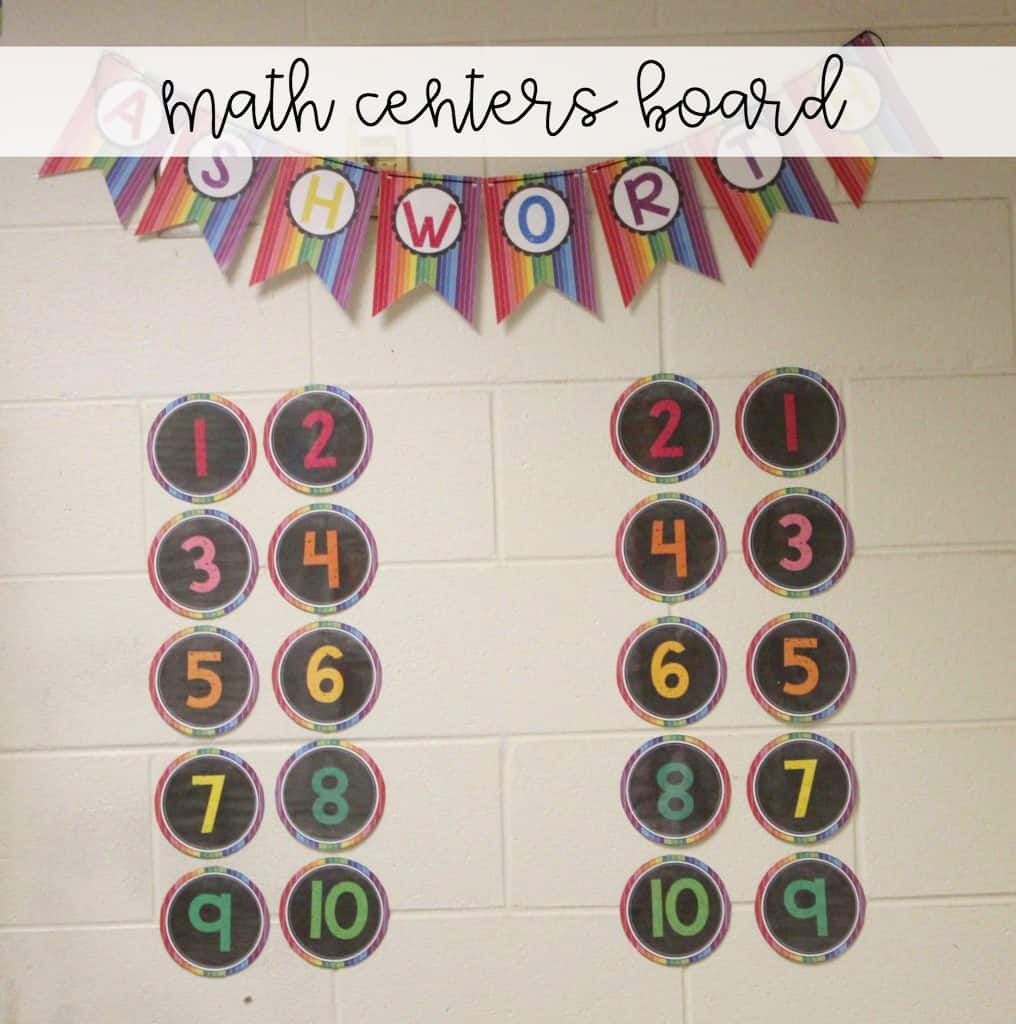
Center Activities for Teaching Guided Math
I like to use a huge mix of activities for my math centers. Students perform much better when the activities are novel and interesting. When I have a small class of 22 or less students, I have 10 centers. If I have 23 or more students, I have 12 centers. I’ve described my typical math centers below.
Math Facts
- Xtra Math – This is a great FREE website that I used as a third grade teacher and fourth grade teacher. It tracks students’ progress on multiplication facts and is a great review tool.
- Multiplication Games – I also use one of my Weekly Multiplication Games as a math center. I love these games, because they’re low prep AND fun for students. I typically include a few options, so students can choose the game that interests them most.
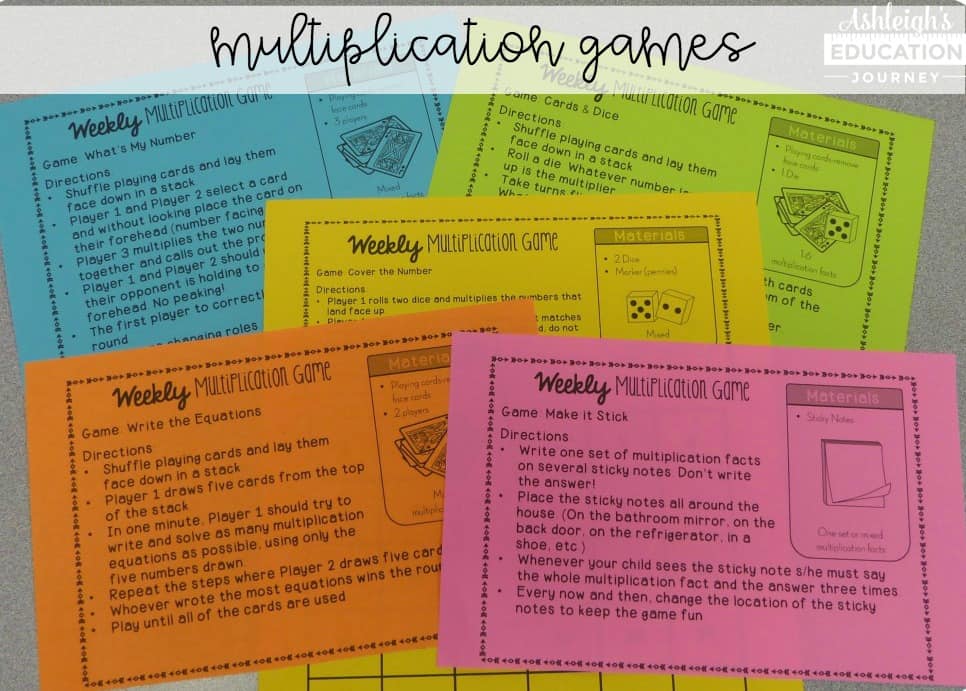
Review
- Games – I incorporate one or two review games or task cards into my math centers. I like to use engaging games like the one below. I also have a set of spiral review task cards for 3rd grade and 4th grade.
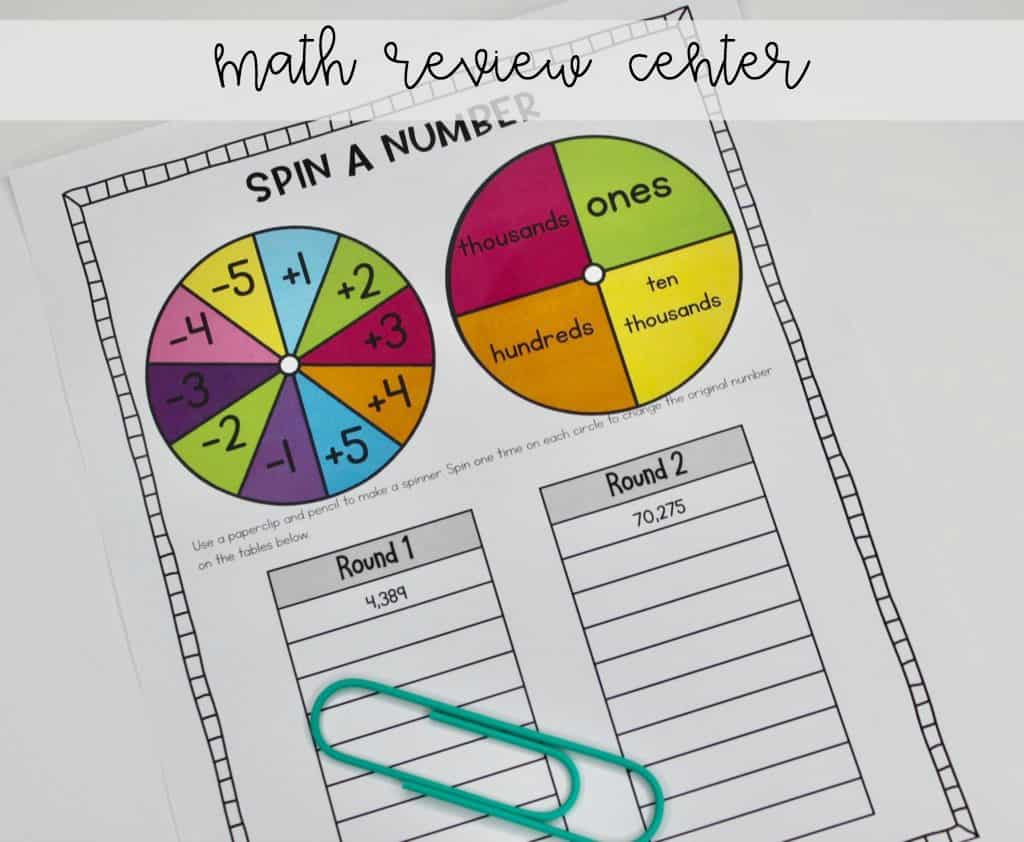
- Number of the Day – I love my Fraction of the Day and Number of the Day for a review center activity. It’s a perfect spiral review, because it reviews almost every essential math concept. I have several different versions of my Fraction of the day and Number of the Day, but they all follow the same format, so students are comfortable with the format no matter which version used.
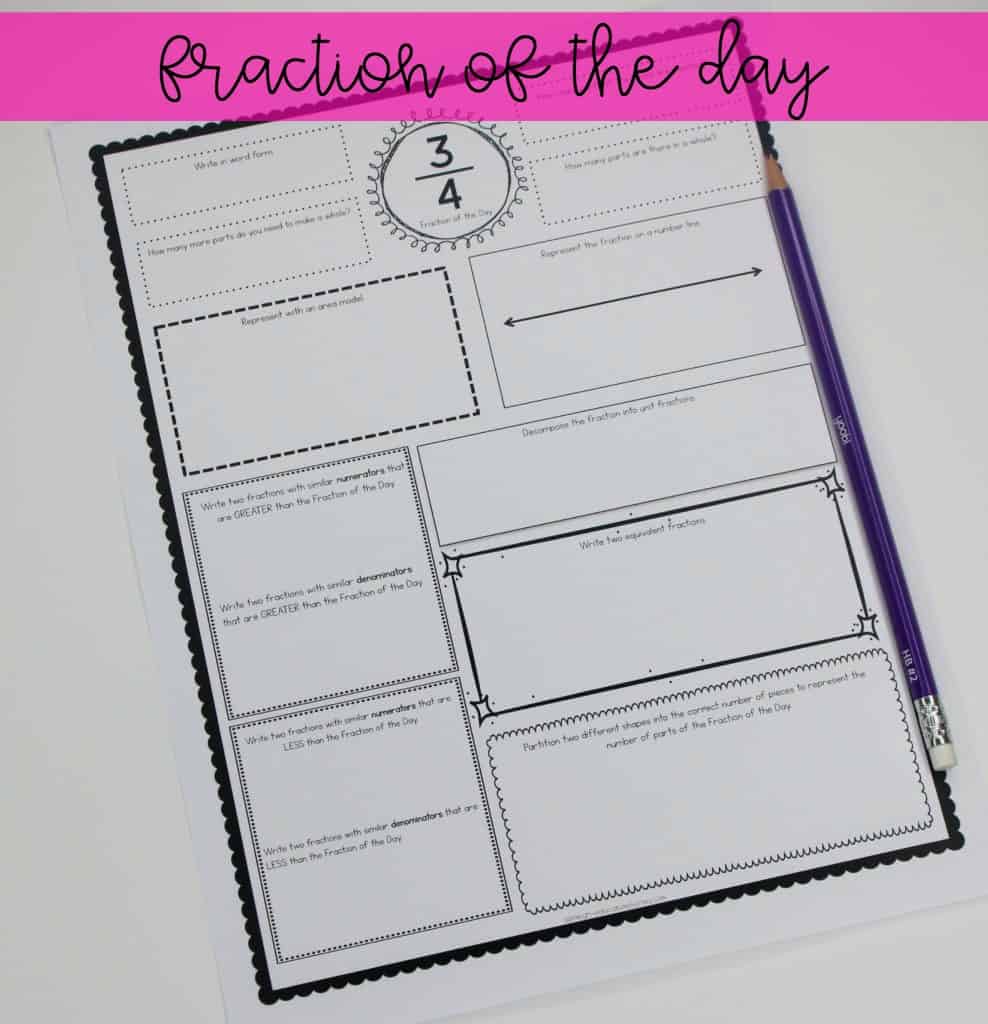
Writing About Math
- Math Journal Prompts – I love having students complete journal prompts about various math topics. With these prompts, I try to use questions that require students to think deeply about the math concept they are currently studying. I avoid word problems, because I try to have students write about their mathematical thinking and reasoning, rather than explaining how to solve a problem. I have Math Journal Prompts for third grade and Jennifer Findley has Math Journal Prompts for fifth grade. Some years I print a math journal prompt book and other years I print the prompts on labels and have students stick the label in their math notebooks.
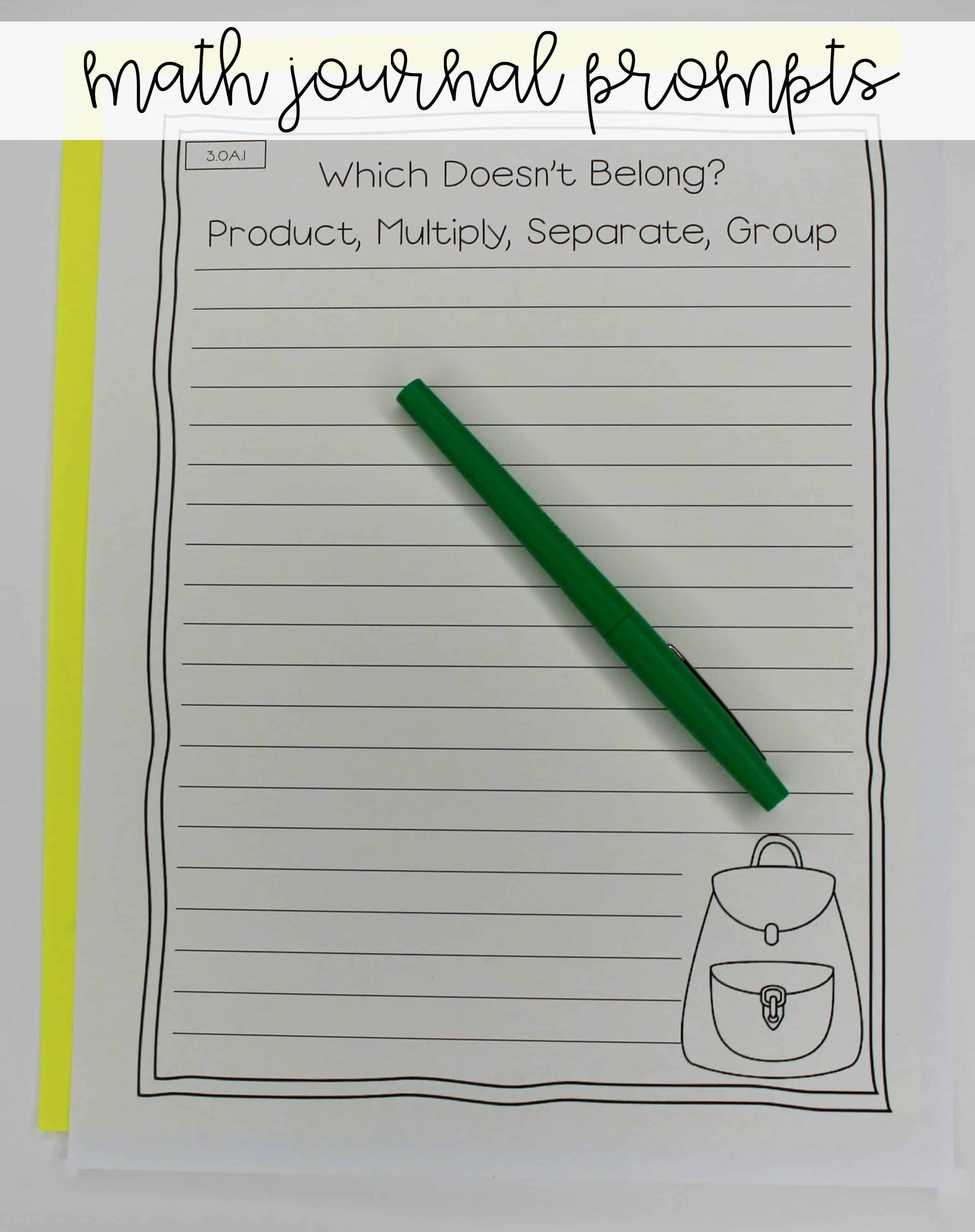

- Constructed Response – I also like to add at least one constructed response task to my math centers. I believe most state tests have a constructed response portion to their math test, so the extra practice is certainly beneficial. More importantly, these constructed response problems allow students to apply high level thinking skills though the context of math. I have constructed response questions for third grade and fourth grade.
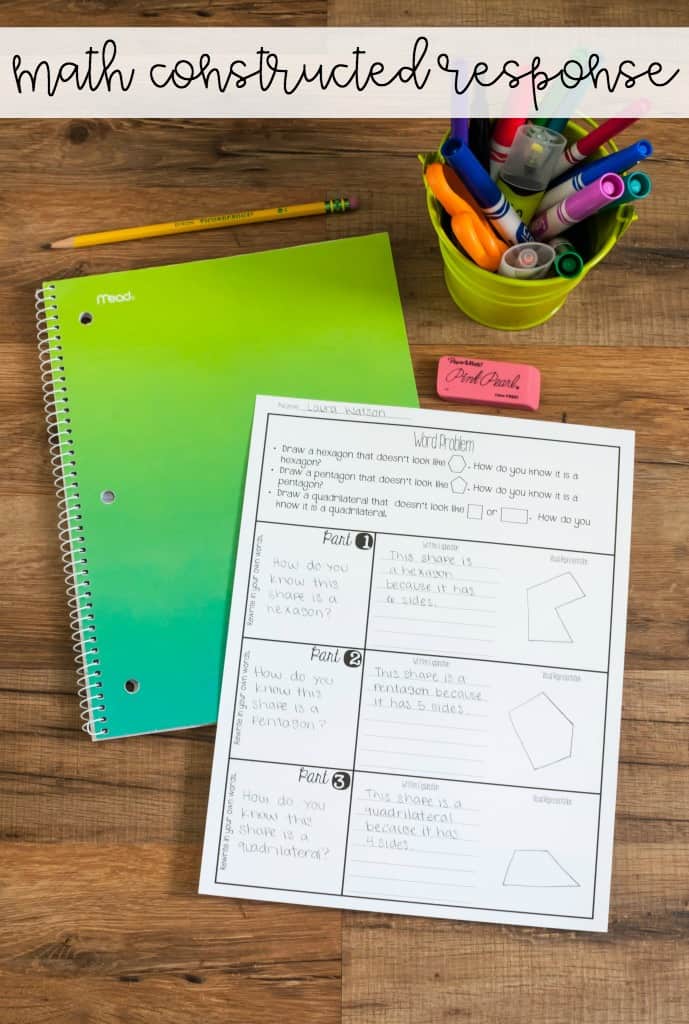
Seasonal
I am a sucker for fun seasonal math centers for teaching guided math. This is why October through December you’ll finding my centers on the festive side! You can see some of my seasonal activities here.
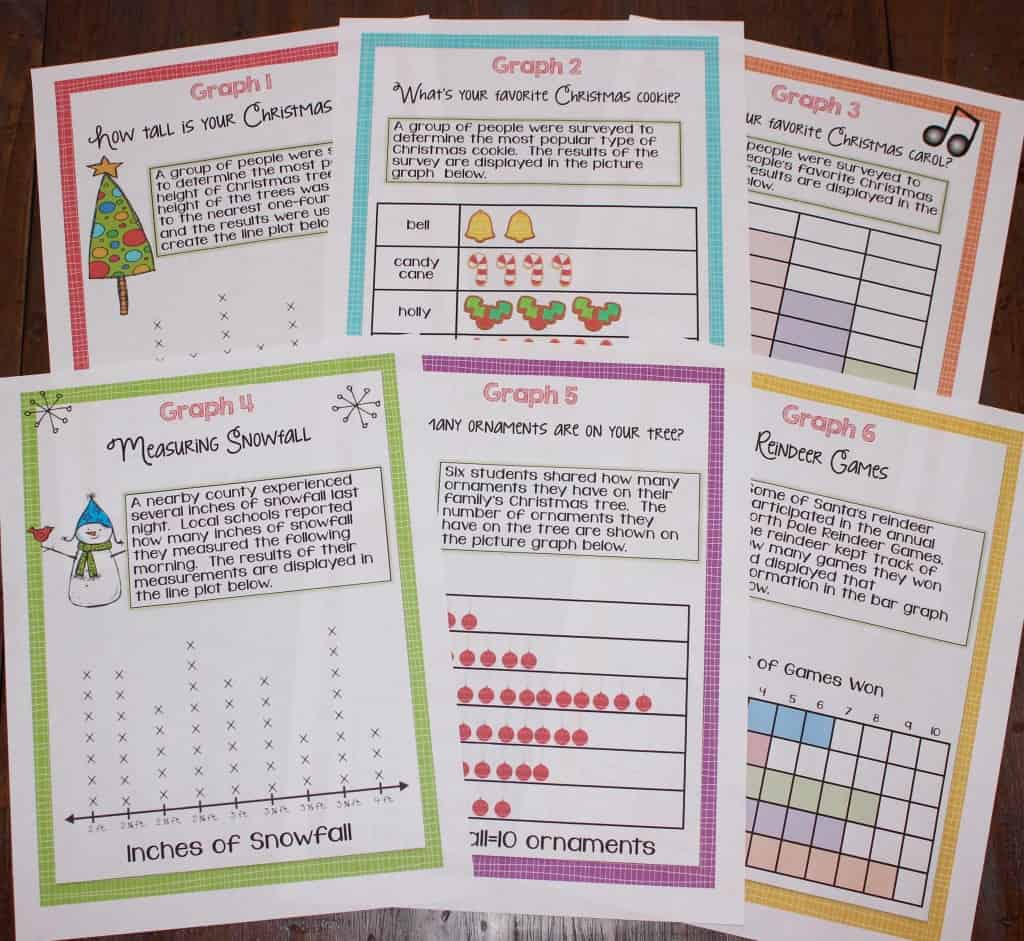
Organizing Centers
I store all of my task cards in sandwich baggies. I typically write the name of the activity on the bag, and I sometimes write how many cards are in the bag. I’ve found that this makes clean-up a little easier.
I’m pretty selective on the center or station activities that I actually have out and available to my students. There are always a handful of activities for our current topic, as well as a few review activities from different units, but I don’t like to have too much out at a time. I organize these into different tubs that I bought from Really Good Stuff. The were pricey but worth every penny. I LOVE being able to stack things neatly! Each tub is given a number, and the number correlates to which activity students complete and where they complete the activity. Numbering the tubs makes them very interchangeable, so when I want to change station activities, I don’t have to relabel anything.
Inside my station tubs is everything my students need to complete the station(s). I occasionally like to include sleeves for recording sheets to save on paper and copies, so I have included wipes and dry erase markers in any storage tub that has a recording sheet. If the activity or game requires any manipulatives, I store those in the tub as well.
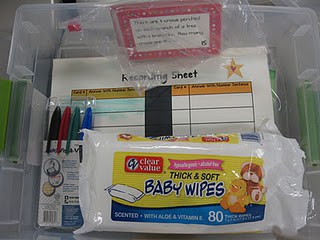
I keep all of the task cards that I’m not currently using in my classroom cabinet. I store these cards in small stackable tubs. Originally I only kept one set of task cards in each tub, but as I accumulated more and more activities, I started grouping multiple activities in a tub. For instance, I may keep all of my place value activities in one tub. This helps save me a little space, and that is definitely a benefit for me!
Whole Group Instruction
As I mentioned earlier, I do whole group math two or three days a week. I like this method for teaching guided math, because I can move forward in content at a steady pace. I begin a whole group lesson with a mini lesson that introduces a new skill or concept. Typically, I use my students’ math reference notebook and an anchor chart to introduce the skill. I then model the skill for my students. After modeling the skill, I have my students participate in guided practice on their dry erase boards.
Once I feel comfortable with students’ understanding, they use their dry erase board for independent practice. During this time, I’m careful to take notes, so I’ll remember who I need to work with during our work time. When I teach a new concept that requires conceptual understanding such as fractions and decimals, I’m careful not to teach concepts that I want my students to discover for themselves. In those cases I limit my mini lesson to only the perquisite skills necessary for that concept. After the mini lesson, I like to have students complete some type of performance task. I want my tasks to be highly conceptual and not a skills practice worksheet. I try to assign open ended questions and/or questions that require significant problem solving.
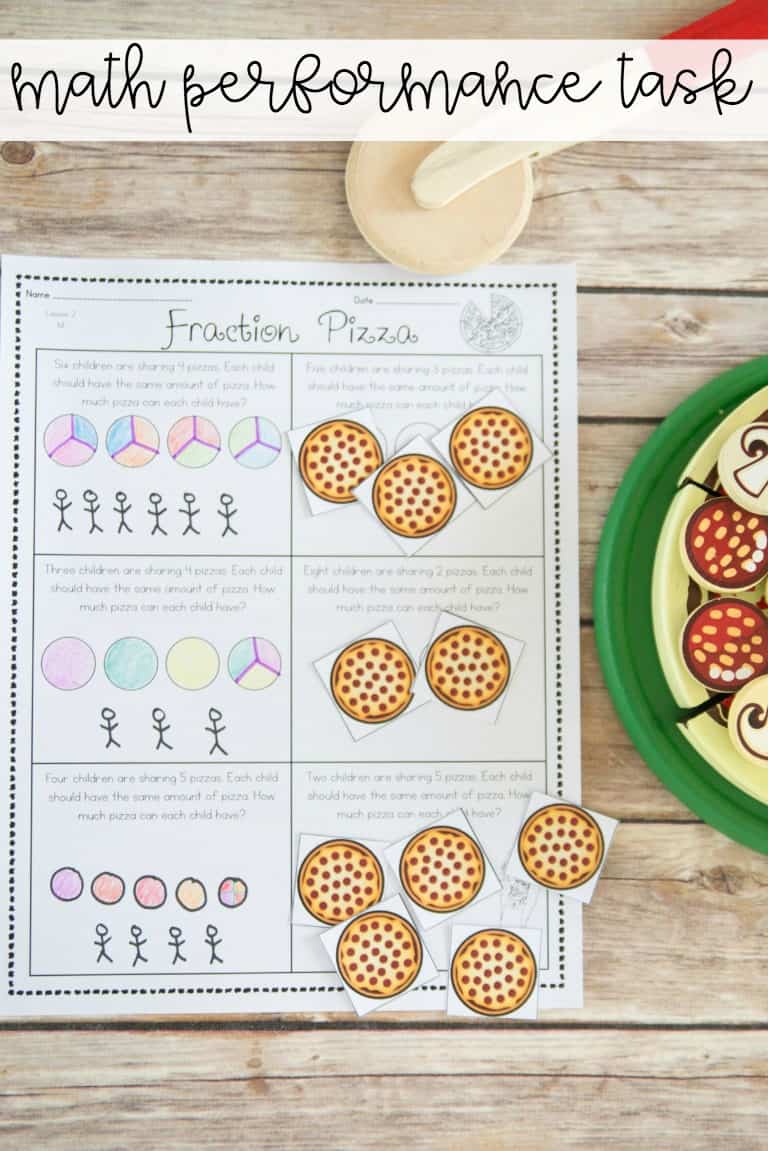
Monitor students as they work and provide support as needed. However, be careful to to help too quickly. A good workshop task should include a bit of a struggle for students. If I saw a student have difficult with any of the basic skills taught during the mini lesson, I will pull those students back to an informal small group.
The final, and not to be skipped, part of guided math is assessments. However, I realize that this has become quite the long blog post, so I’ll save that for a later day!

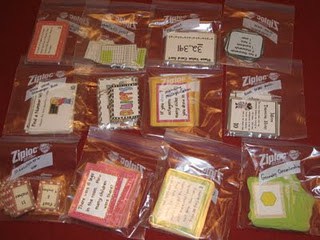
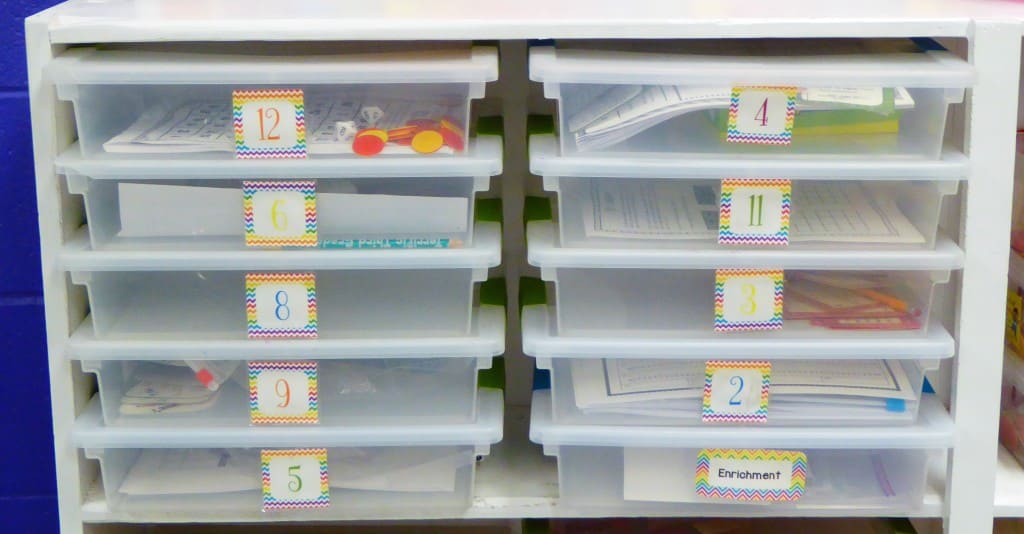
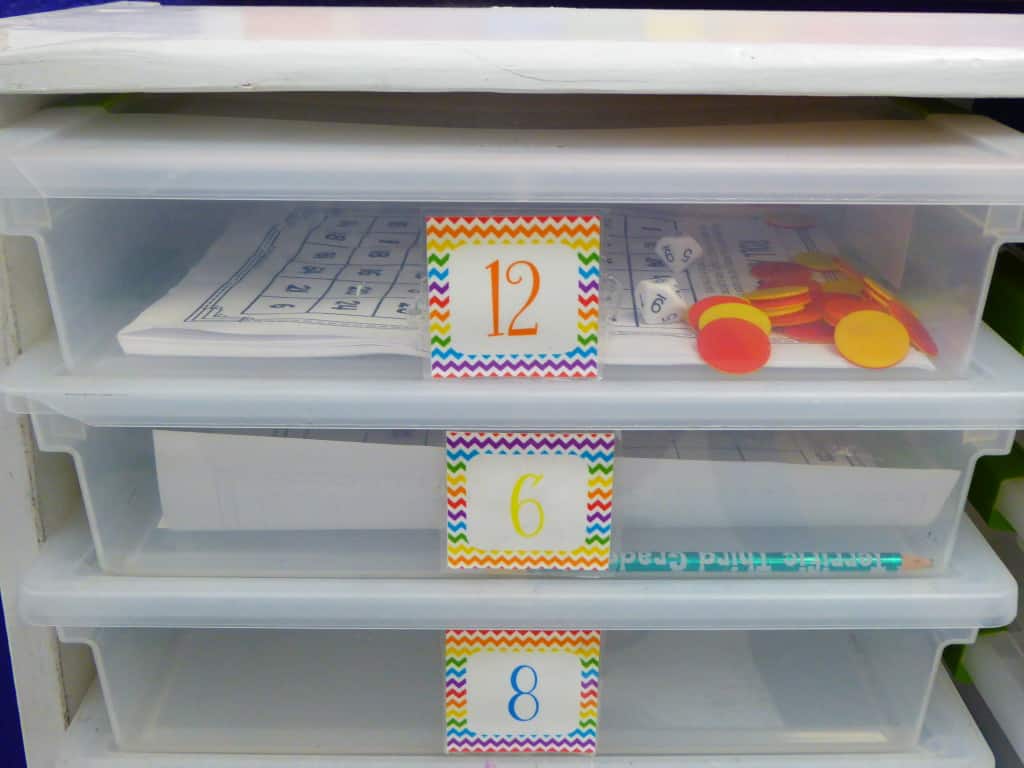
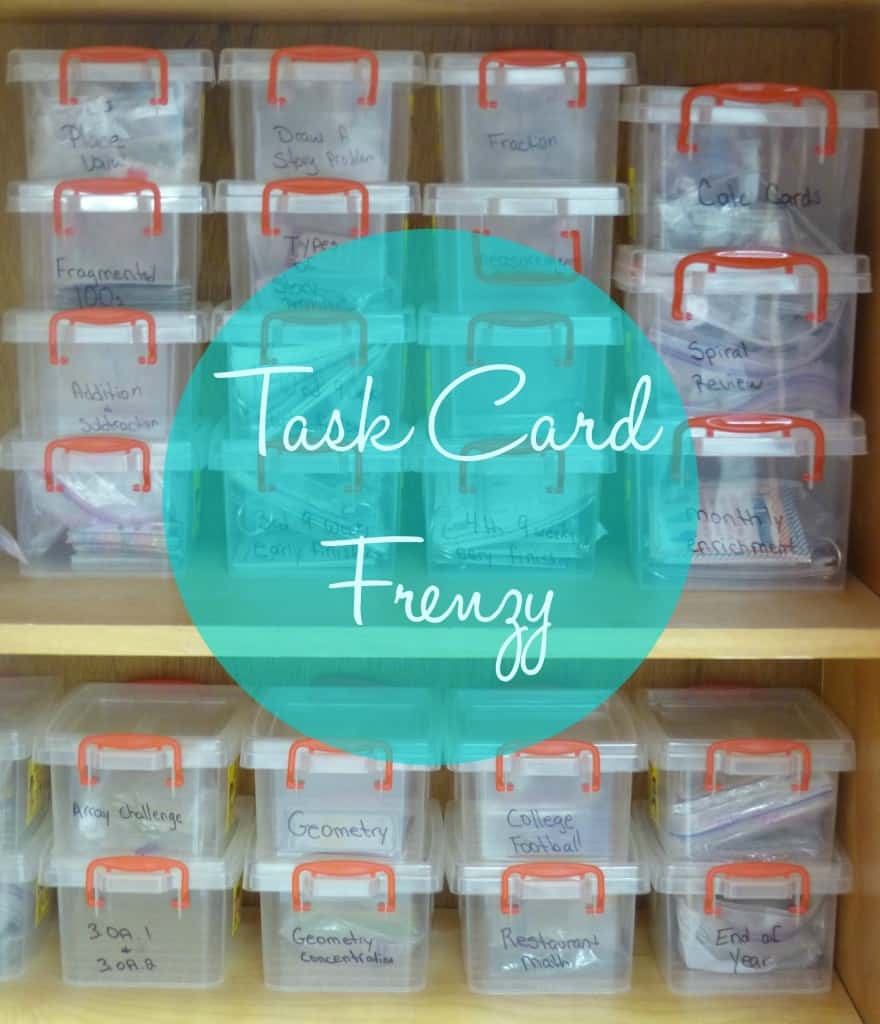


Hi Ashley,
I really enjoyed reading about how you structure your guided math rotations. I am very interested in the fact that you only pair up your students rather than work in a group. I think I might try that.
Anyway, I have a question, you mentioned that your table is not part of your rotations and that you then pull kids out of Their station. How does this effect the students finishing the work they missed when they were at your table? I really like your idea I just want to understand how that factors in.
Also, do you pull any daily grades from your rotations or is it just mainly practice and then how do you get daily grades?
Thank you for sharing this great idea!
-Samantha L.
Hi there! I don’t give daily grades, so grading isn’t an issue for me. I only grade end of unit assessments (for summative assessments). If a student works with me, I don’t hold them accountable for what they missed. I don’t want them to see working with me as a punishment or as extra work. Let me know if you have any other questions!
Hi Ashleigh,
Thanks for sharing your wonderful ideas! How do you hold students accountable during center time? How do you make sure they are understanding the concept and completing the work? This is one of my biggest struggles with centers.
Hi Ashleigh,
I’ve just discovered your blog and products and love them! I really like the flexibility of your math system because you have time to spend observing the kids and time to have them at centers (which is what my school wants!).
Anyways, I have a few questions regarding your math block. On the days you pull groups and students go to centers, do you start into these right away or is there a warm up activity or number talk?
On the days that you don’t pull groups, it sounds like you do the majority of your teaching and observing while students do guided practice/independent practice. Do you find that the kids have enough to do for the time you have? (like my block is an hour).
Do you pull these activities from their math books?
I hope my questions make sense! Thank you for taking time to answer.
Thanks, Katie
I always start with a warm-up (going over morning work) and a number talk. I don’t have a math book, so I create all of the activities that we do. On the day’s a don’t pull groups, we usually don’t have any trouble with time!
Hi Ashleigh!
I love your blog! So full of information. Do you have a 4th grade Guided Math Bundle?
Thank you! I do have one! https://www.teacherspayteachers.com/Product/4th-Grade-Math-Bundle-Guided-Math-or-Math-Workshop-3068929